Moso Produces in Alternate Years
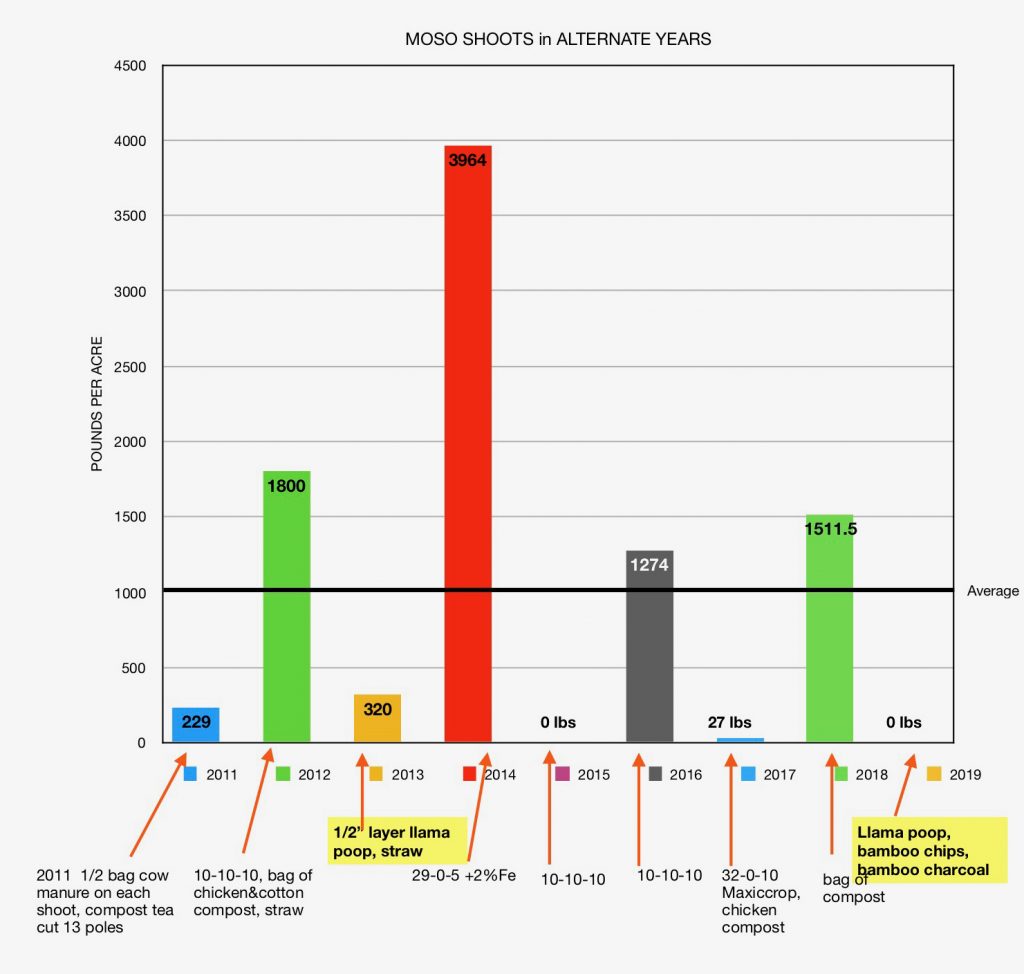
Background: I moved to Perry, Georgia, in October 2010. Robby Russell allowed me to use various of his 20 year old bamboo varieties for research. His moso is from a division of the Anderson clone in the old Silverbrook Cemetary in Anderson, South Carolina. Rufus Fant planted it in the nineteen teens. He mail ordered his moso from California! Amazing to think that a mail order nursery industry existed in the beginning of the twentieth century!
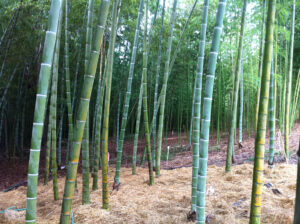
My research plots measure 1000 square feet with dimensions being 32 foot by 32 foot. The moso research plot is adjacent to the dirt access road. I cut away small trees, shrubs, vines, weeds. I had read that moso bamboo in Japan yields from three to ten tons per acre! I was psyched by that high yield!
In 2011 my moso yielded 229 pounds per acre, not even one ton! What is wrong?! Robby and I agreed that I needed to thin the moso to stimulate production. I removed 13 of the smaller canes and a few invasive canes from across the dirt road.
In 2012 yield of shoots was 1800 pounds. Better than the yield in 2011 but less than one ton. I thought that the increase from 2011 was because I thinned the poles in 2011. To increase the yield in 2013, I scattered 10-10-10 fertilizer in the plot. I spread a bag of chicken-and-cotton compost. I placed a handful around each new cane. I mulched with wheat straw. I expected a bigger yield in 2013 because of my fertilizing.
In 2013 the moso did not shoot until April 9, ten days later than in 2011. It took that long for the soil to reach 58°F!! A cold spring delayed harvest and reduced yields in nine out of ten research plots (praecox, henon (2 locations), houzeau, Robert Young (2 locations), dulcis, Bory, golden vivax, bambusoides). Moso yield was 320 pounds. I blamed the low yield on the cold weather and the resulting late start of shooting.
I found a source of llama dung. This remarkable fertilizer allowed the Incas to grow maize at 10,000 feet! That civilization was built on llamas for labor and for dung for fertilizing crops. Llama dung is in pellets with little odor. Its analysis is 1.7 – 0.7 – 1.2 We spread half an inch of llama poop over the entire moso plot. Then we covered it with straw.
In 2014, yield was close to two tons at 3964 pounds. Was llama poop the reason for the jump in productivity?
In 2015 and 2019, I harvested zero shoots. Because my research showed that moso bears in alternate years. I expected great harvest in 2020 if I fertilized with llama dung and mulched with chips or straw. Astonishingly and to my dismay, this grove produced no shoots in 2020. Two years in a row, this moso produced no shoots. What is going on with this grove of moso bamboo!?
On a Monday in 2020, I had noted 5 shoots outside my research plot in the larger grove of which it is part. I had decided not to harvest them because the entire grove except my research plot had been over-harvested for large poles (not by me!!!) two years before and had not recovered. When I returned on Thursday, wild pigs had eaten these 5 shoots from the top down into the base underground. Wild pigs are a new predator of shoots in my experience. Before, predators were squirrels and rabbits and mice… rodents.
Observation: Moso bears in alternate years because it changes its leaves in alternate years. The year that moso changes its leaves, all the leaves turn yellow at once. The ground is littered with yellow leaves.
Moso shoots less in the year that it changes its leaves – or in my case does not shoot at all! A farmer’s income from a moso grove will be less during the year that the moso changes its leaves.
Other Phyllostachys don’t have this alternate year pattern. They lose the oldest leaf on the twig each summer when a new leaf opens and in winter when the oldest leaf dies.
First photo taken in 2011; second, in 2013; Third photo taken in 2019. Expect few shoots (minimal harvest) when you see your grove turn yellow.
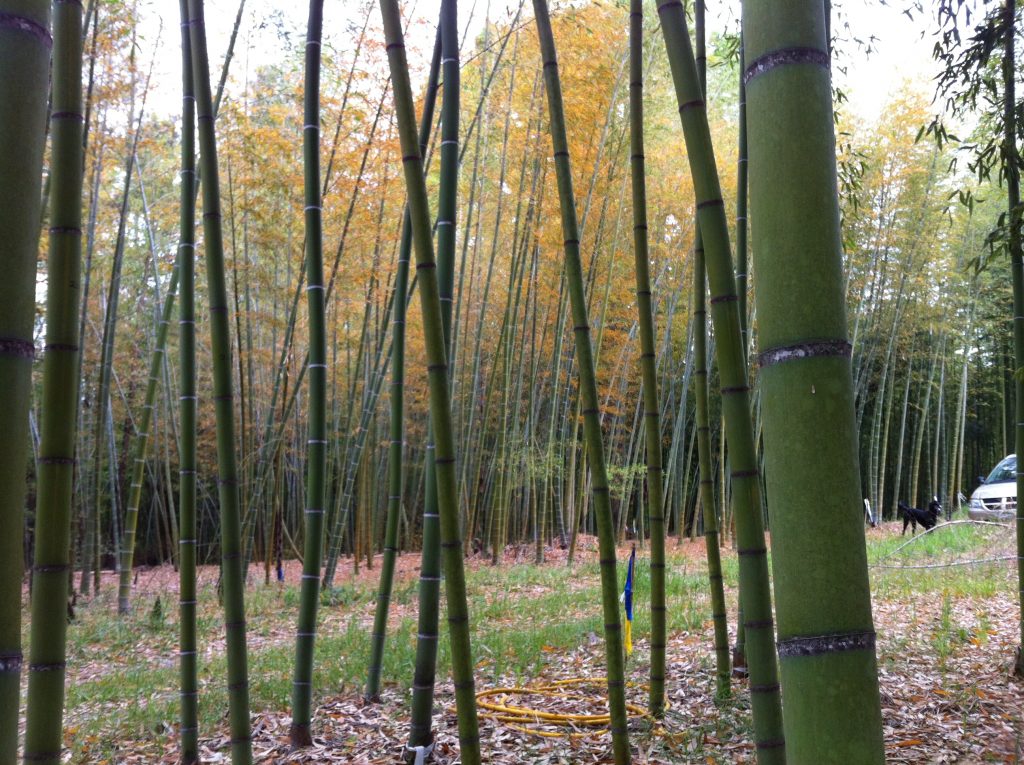
2011
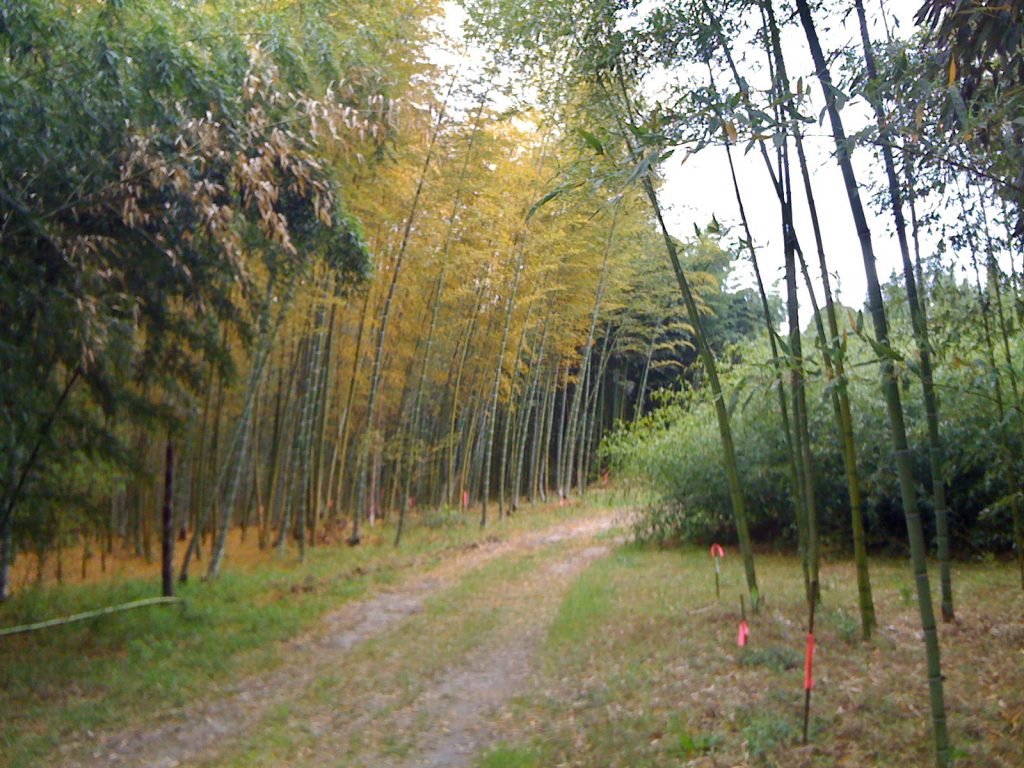
2013
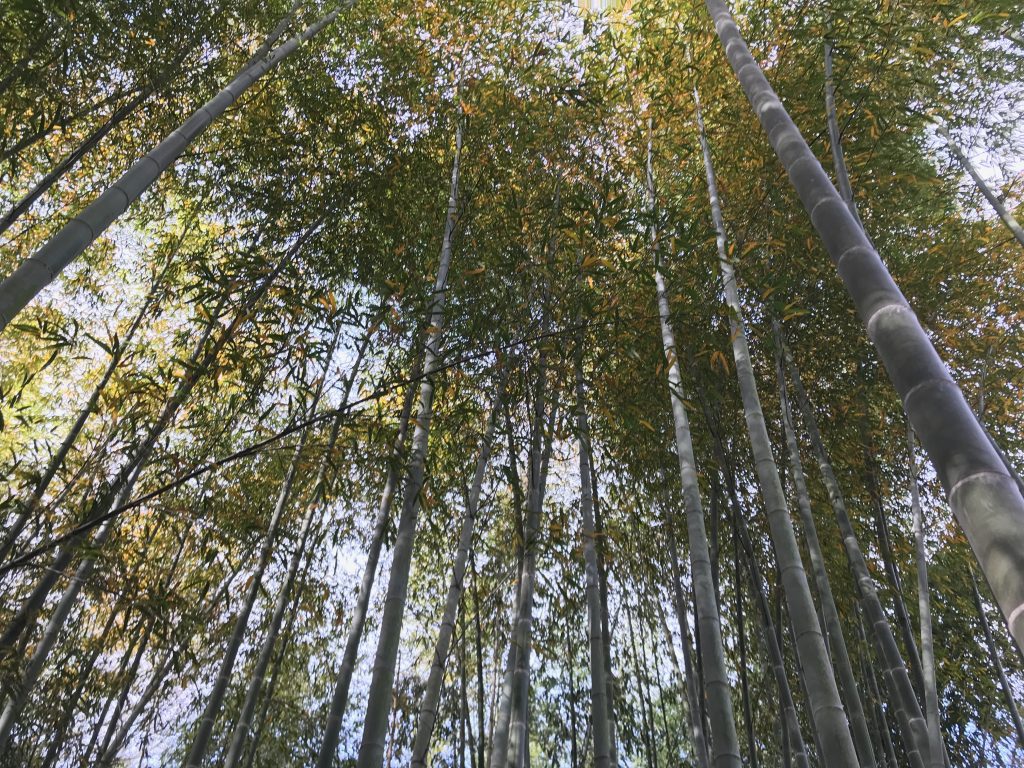
2019
Comments: I have read that careful management can even out the extreme pattern of one-year-on and the next-year-off. In early Japan, this careful management was by necessity. Farmers emptied the contents of stables at the end of each winter onto their moso. Other organic fertilizers including human urine and dung and the dead bodies of pets and livestock were added in addition to the manures, used stable bedding, and hay from the stable.
Moso needs considerable irrigation for maximum production. Kyoto receives sixty inches of rain a year and two-thirds of it occurs from May through September. These are the months of growth of rhizomes. Georgia receives 45 inches of rain a year. Georgia’s rainfall is spread throughout the year. The heavy rain in summer that moso likes is not there. The moso grove that my data comes from is not irrigated.
Conclusion: Adding ample organic matter in addition to manufactured fertilizers often improves yields. Irrigation is essential for high yielding moso bamboo.